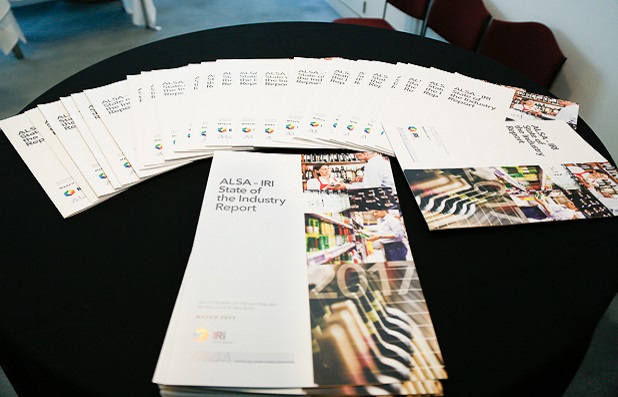By Andy Young
The Australian Liquor Stores Association and IRI have released the second annual State of the Industry Report, looking at the key trends and patterns in Australia’s $17bn retail liquor sector.
Launched at Parliament House on Wednesday night, the report provides detailed analysis of packaged liquor retailing from 1 January to 31 December 2016.
Speaking at the report’s launch, ALSA President Guiseppe Minissale said: "The Australian retail packaged liquor sector turns over $17 billion, generates employment of 165,800 Australians and with 47,800 direct employees, our sector employs more Australians than either iron ore mining, or coal mining – two of the much-heralded Australian resource sectors.
"Our members’ businesses generate indirect taxes of $5.1 billion and cater for 15.5 million adult Australian drinkers and do so, year in and year out – not only during resource booms.
"The retail liquor sector is not only an important employer we are an important contributor to both the economy and to the fabric of the Australian way of life.”
As well as detailing the positive contributions the retail liquor sector makes to Australia’s economy and social fabric through taxes and employment the State of the Industry Report highlights how important the premiumisation trend has become in Australia and that the retail liquor industry has adapted to consumers’ changing drinking habits, needs and preferences.
In addition there is detailed information on which brands have performed well over the last year, crucial information for retailers looking to fully understand consumer trends and preferences.
Minissale added: “The ALSA-IRI State of the Industry Report provides a wealth of fact-based analysis with a clear snapshot of the jobs, economic and social contribution that the retail packaged liquor sector and the overall alcohol beverages industry makes to the Australian economy and to the fabric of the Australian way of life.
“Growth of the premium part of the market is consistent across all major categories and reflects the changing relationship that Australians have with alcohol beverages – the days of plonk in the park and the 6 o’clock swill, have fortunately been left well behind.
“Up-to-date professional retailers and marketers must connect with today’s instant information age and technology savvy consumers, who are also far more health conscious than their parents and grandparents.
“The analysis of consumption trends, and identification of challenges for our members’ businesses from the increasing burden of regulatory issues, show ALSA’s commitment to help retailers understand and deal with the major issues in our ever changing marketplace.
“The continued growth of premium products, heralds a more buoyant marketplace in 2017, with increased opportunities for our members’ businesses to prosper and grow to satisfy the needs of the changing consumer and marketplace.”
The report details that the retail liquor market grew by 3.3 per cent in 2016, which amounted to $546m of growth. Once again value growth outpaced volume growth (1.5 per cent), highlighting the ongoing premiumisation pattern.
The continued growth of craft, low-carb and mid-strength beers helped to underpin 3.4 per cent growth for the category in 2016.
In addition the wine category also grew, up by 4.4 per cent, with premium tier wines exerting more influence on the category’s growth trajectory.
The glass spirits category recorded above the industry average once again, with annual growth of 4.2 per cent. The report highlights that the category has been “bolstered by the burgeoning variety of high-quality and approachable offerings, with the number of glass spirit products in retail liquor growing by five per cent in 2016”.
Cider was the fastest growing category in 2016 in value terms, with 6.5 per cent dollar growth in 2016. In particular, Australian-produced cider has performed particularly well, having recorded growth of 22.9 per cent in 2016.
The only category to see negative growth in 2016 was RTDs, declining by 0.7 per cent, however the report does highlight some of the innovations seen in the category, particularly from Diageo Australia, in the latter part of last year which give “some signs of encouragement” for the category.
The full report is now available to ALSA members through the ALSA website.

